I really don’t want to be older than I already am, but I sometimes wish that I’d been born a little sooner so that I could have enjoyed the company of my maternal Estes family a little more. Home movies filmed by my Grandpa Tom and Uncle Jim have given me a glimpse into just how much fun the family had. As I watched the following early 1960s clip thinking that there was a heck of a lot of smooching going on, I also started wondering how many ounces were in the bottles of beer they were drinking.
Maybe I’m the only one who thinks the bottles in the film look bigger than the normal 12 ounce bottles of today, but I thought those beer bottles looked huge. I wasn’t able to find any verified fact on how large those bottles were, but it got me wondering how many different container sizes there are for beer today. We all know about the standard 12 ounce cans and bottles that have been the norm for decades and I’ve become familiar with growlers in the past few years as I’ve gotten involved with craft beer, but are there other choices?
Well yes, I didn’t have to look any further than my own refrigerator to answer that question. I found that some beer we were recently gifted came in a variety of sizes. We have some normal 12 ounce bottles, some at 1 pint 6 fl oz (22 ounces) and some at 1 pt 9.4 fl oz. (25.4 ounces). Why so many choices?
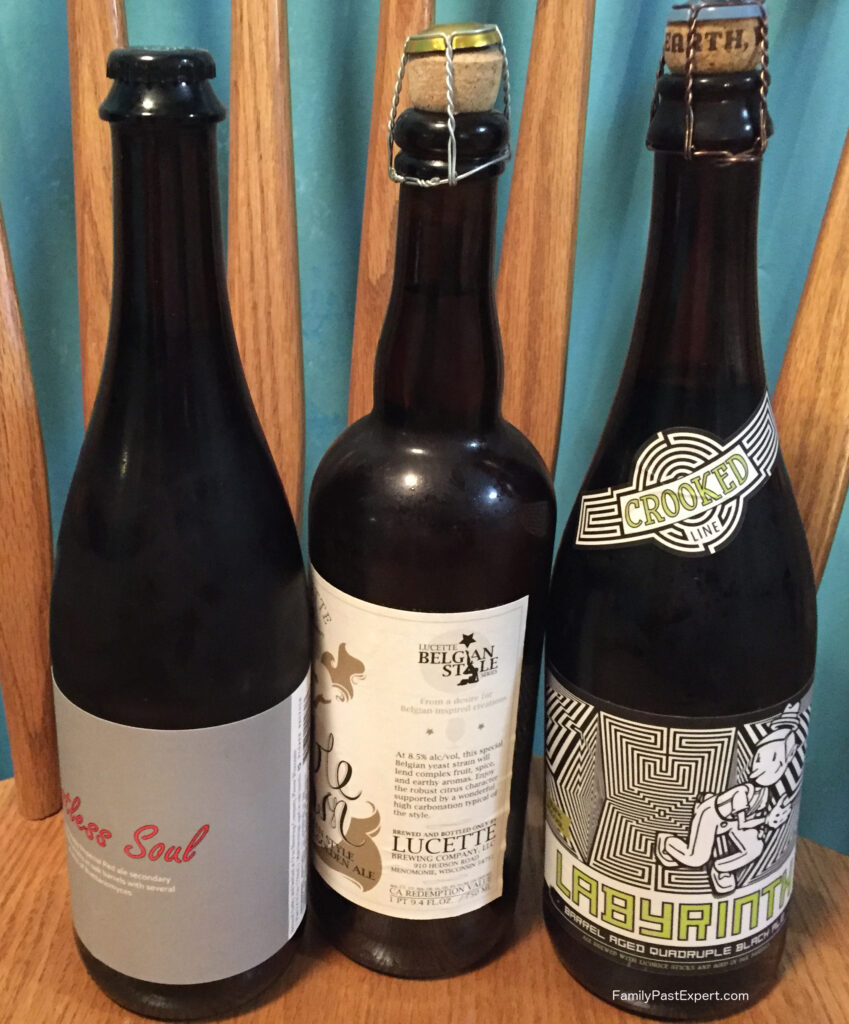
A craft beer enthusiast should probably know more about this, so I did a research and found that while 12 ounces is still the most common, there are lots of other choices:
- 22 ounce bottles are called “bombers.”
- 25.4 ounce bottles are the equivalent of 750 ml.
- 32 ounce bottles are usually called “howlers,” but can also be called a Growlette, Grumbler, Grenade, half-growler or mini growler.
- 40 ounce bottles are often referred to in pop culture as “forties.” These are usually 40 ounce bottles of cheaper varieties of beer and of malt liquor. Though, sometimes 32 ounce bottles of the cheaper stuff are also called forties. If I stick with craft beer, I probably won’t run into many forties.
- 64 ounce containers are called “growlers.”
- 104 ounce (3 liter) containers are called “jerobaoms.” These hold the equivalent of four normal wine bottles and can also be called “double-magnums.” The jeroboam term is also used for 4.5 liter bottles sometimes.
But why all the different sizes?
Growlers have become popular as craft breweries have popped up. Growlers allow these establishments to sell their beer for take-out without having to have a bottling system. As late as 2002, Beer Advocate magazine had to explain growlers to its readers. In their article, “The Growler: Beer-to-Go!” they also explained that while the origin of the name growler is uncertain, legend has it that in the late 1800s and early 1900s, beer was carried home from local pubs in galvanized pails. Supposedly, when the beer sloshed around in the pail, it created a rumbling sound as the CO2 escaped through the lid and the term “growler” was coined. They added that a competing legend says that growlers are named for the buckets of beer once given to factory workers to hold them over to the next meal break before their stomachs started to growl from hunger. Most craft brewers allow you to purchase beer by the growler straight from their taps.
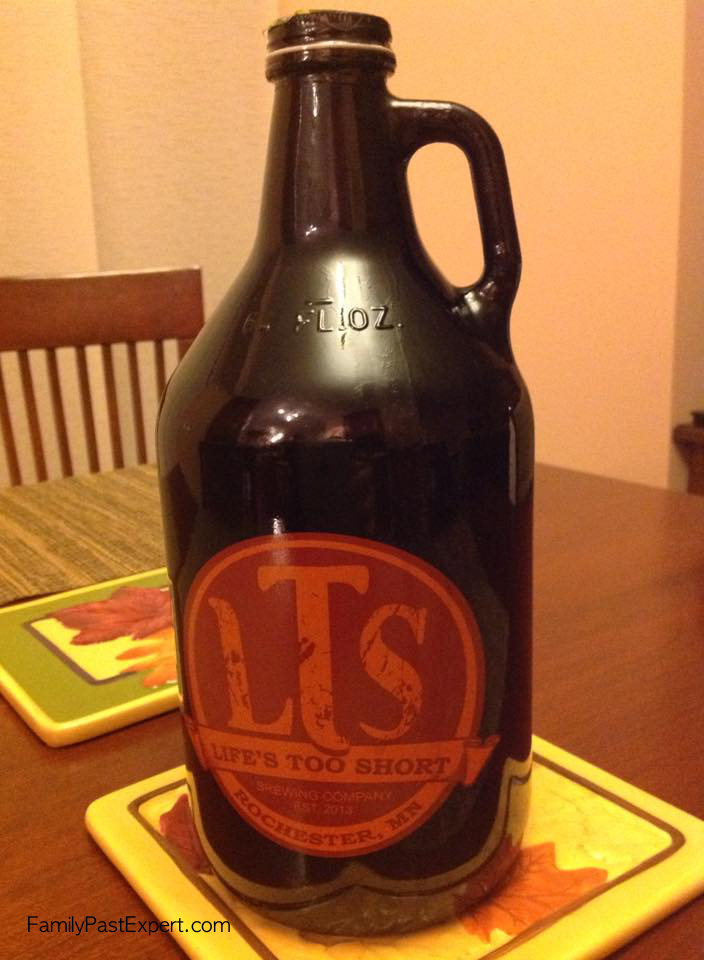
And as far as the larger bottles, one reason for the 750 ml variety is that is the same size as a typical bottle of wine. This size is starting to be sold in restaurants as something to share, thus competing directly with wine. I’ve personally not encountered this in restaurants yet. We used to get asked if we wanted beer by the glass or if we wanted a pitcher, so it’s not really a new concept, but it probably will be interesting the first time I have to look at the “beer list” with a dinner partner to choose a beer to share to accompany our meals.
A 2013 New York Times article quoted the term the “wine-ification” of beer when talking about the larger bottles. It is all part of a push to get people to think of beer in a different light and to redefine the beer drinking experience. The goal is to, for example, have people think of beer as something to pair with a nice meal, or at least to savor and taste, rather than just being something you pound down when you are thirsty or partying.
The bigger size bottles also look cool and tend to inspire more impulse purchasing. Great marketing! People are unconsciously willing to pay more per ounce for these big bottles because the packaging makes them look special and elite. Bombers, for example, have the advantage of holding more beer than the bottles you would get in a six-pack, but the cost per ounce is usually a lot higher. We don’t always want to have to do cost-per-ounce math when buying beer, but remember, two 12-ounce bottles would add up to 24 ounces, and a bomber is only 22 ounces. There can be a little sticker shock when one sees the price of the larger bottles as well. The large beers in my refrigerator had price tags ranging from $7.99 to $13.99 (and these were purchased in Wisconsin where the alcohol taxes are low). I know back when I bought my Darca Doo to take home, I was a little shocked to pay $16 for a can of beer (750 ml), but if you read that blog, you know I thought it was worth it.
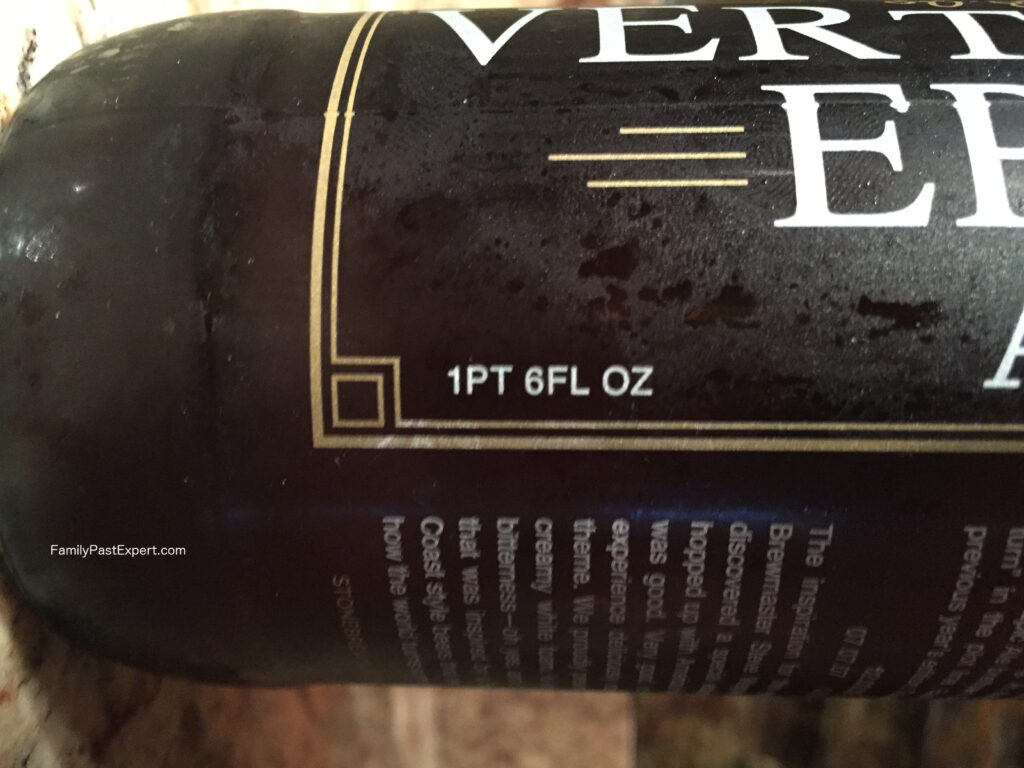
Another complaint regarding the larger bottles is that beer, unlike wine, does not keep well once the container is open. An open bottle of whisky can be re-capped and put back on the shelf (for years) and wine can be re-corked and enjoyed another day. But that doesn’t work as well with beer. Once it is open, it needs to be finished quickly before it goes flat. It is not going to be as good the next day. This can lead some people to drink more than they would have otherwise (or should). With ABVs* like 8.5% and 13.2%, it is really not a good idea for most people to try to finish one of these bottles solo. Note that there are gadgets you can buy to reseal your growlers or bombers so that the beer stays fresh longer, but results may vary and the beer still probably isn’t as good as it was when first opened.
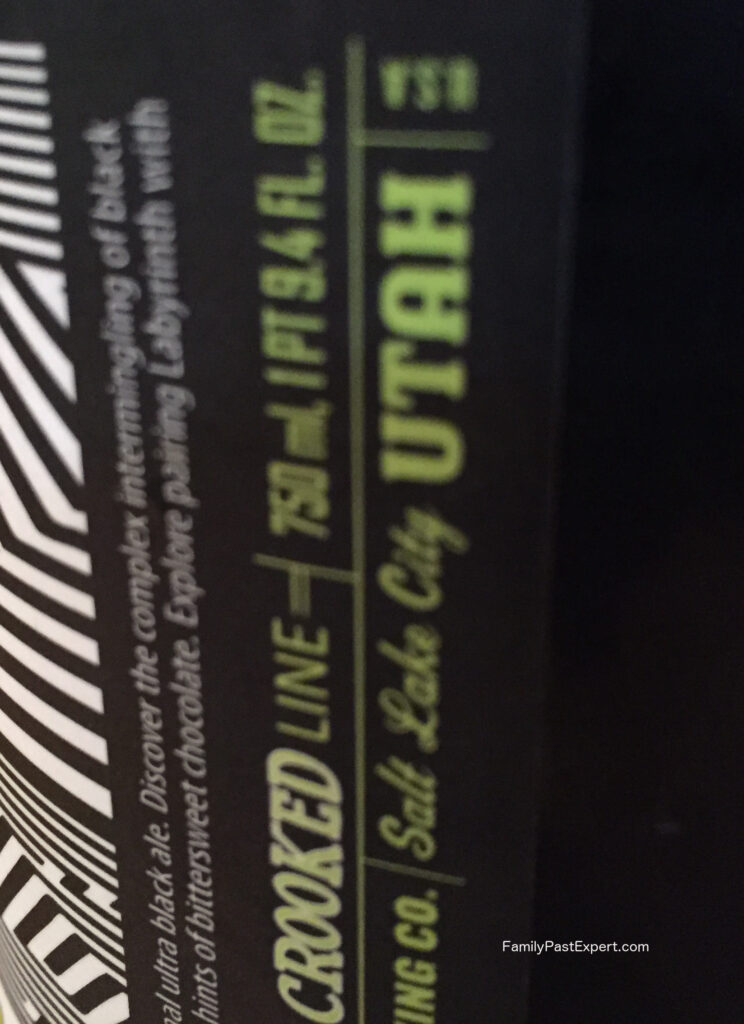
Though I mostly only found complaining on the internet about these larger bottles, I personally like them when trying new beer. I hear that some retailers let you build your own six-pack of different 12-ounce beer varieties, but that isn’t always an option. I like the larger bottles sizes so you don’t have to commit to a whole six-pack, yet still have enough to share. Well, I guess sometimes after a taste or two I wish I didn’t have to share, but that is probably another story. And, I really have bought into the whole “beer experience” idea. I like slowing down, really tasting my beer, and sharing that tasting experience. These craft beers are often full of interesting and exotic ingredients, so they are worth the extra prestige of a fancy large bottle.
I still don’t know what size beer my Estes family was drinking way back when, but it sure looked like they were having fun. I enjoyed taking time to do a little video editing to share in their joy. I thank the photographers and keepers of the film for leaving traces of these happy times of my parents, grandparents, aunts, uncles and Estes cousins for me to savor decades later – truly a spirits and spirits intersection.
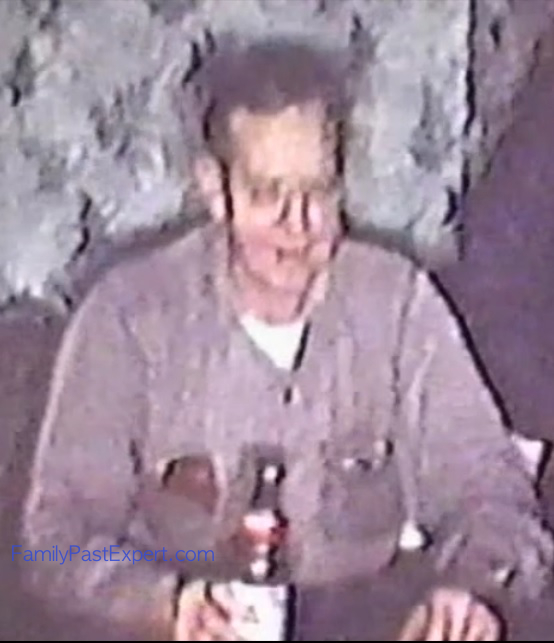
* ABV = Alcohol by Volume.
Sources:
“The Growler: Beer to Go!” Beer Advocate. 31 July 2002. Web. 1 February 2016. http://www.beeradvocate.com/articles/384/
Risen, Clay. “Craft Beer’s Larger Aspirations Cause a Stir.” New York Times. 4 March 2013. Web. 1 February 2016. http://www.nytimes.com/2013/03/06/dining/craft-beers-trend-toward-larger-bottles-causes-a-stir.html?ref=dining&_r=2
“Bomber” Beer Wiki. Web. 1 February 2016. http://beer.wikia.com/wiki/Bomber
“Craft Beer Bottle Sizes (Rant)” The Mad Fermentationist. 11 October 2011. Web. 1 February 2016. http://www.themadfermentationist.com/2011/10/craft-beer-bottle-sizes-rant.html
“Beer bottle” Wikipedia. Web. 1 February 2016. https://en.wikipedia.org/wiki/Beer_bottle
“32 oz Growlers – what do YOU call them?” Beer Advocate. Web. 1 February 2016. http://www.beeradvocate.com/community/threads/32-oz-growlers-what-do-you-call-them.81034/
“Jeroboams” The Free Dictionary. Web. 2 February 2016. http://www.thefreedictionary.com/jeroboams
“Bottle sizes of craft beer” Craft Beer Restaurant. Web. 2 February 2016. http://craftbeerrestaurant.com/Craft_Beer_Restaurant/Bottle_Sizes.html


Leave a Reply